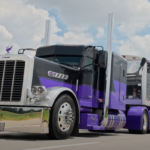Earlier this year, Amazon.com Inc. initiated a trial of a grocery delivery service targeted at individuals who are not enrolled in its Prime loyalty program. Presently, the e-commerce giant is extending this service nationwide across the United States, coinciding with its plans to launch additional supermarkets in the coming year.
The expansion, disclosed on November 9th, is a component of a broader overhaul of Amazon’s grocery services, as previously reported by Bloomberg in August. This service will be available to customers in any location where Amazon operates its Amazon Fresh service. For those without a Prime membership, the delivery fee will range from $4.95 to $13.95, whereas Prime members currently incur charges ranging from $6.95 to $9.95, with free deliveries for orders exceeding $100.
Claire Peters, the global vice president of Amazon Fresh, conveyed in an interview that executives were pleasantly surprised by the significant number of customers who availed themselves of the grocery delivery service during the trial period. She also mentioned that delivery options from Whole Foods Market stores would soon be extended to non-Prime subscribers in the very near future.
Save money 💰 and time ⌚️? Yes, please! As of today, customers without a Prime membership can now get grocery delivery and free pickup when ordering on Amazon Fresh, with @WholeFoods Market locations to be added soon. pic.twitter.com/deS3os2QKS
— Amazon (@amazon) November 9, 2023
Amazon, a major player in the online grocery sector, specializes in selling essential household items such as paper towels and cleaning products. However, recognizing the preference of many consumers for in-person shopping experiences, the Seattle-based company has expanded its presence into physical retail spaces in recent years.
Apart from the acquisition of Whole Foods, Amazon has ventured into operating convenience stores, pocket markets, and Amazon Fresh supermarkets. The latter were introduced during the pandemic, reflecting the company’s adaptation to changing consumer habits.
Tony Hoggett, the head of Amazon’s grocery division and a former executive at Tesco Plc, made the decision to halt new store openings last year. This pause allowed Amazon to reassess its approach to fresh-food retail. Subsequently, Hoggett and his team decided to revamp existing stores, focusing on expanding product selection and incorporating traditional retail elements such as hot coffee and doughnuts. This strategic shift prioritized conventional retail experiences over the cashierless technology that Amazon had emphasized for several years.
“We’ve learned that if we don’t master the grocery fundamentals, nothing else matters,” Peters said.
The company has outlined its intention to recommence the opening of new Amazon Fresh stores in 2024, marking the end of a hiatus lasting over a year. Additionally, Amazon has undertaken a redesign of five existing locations, with the recent completion of renovations in three places within the Los Angeles area.
“We will have a good pipeline for next year,” Peters said. “What we won’t do is open stores aimlessly.”





